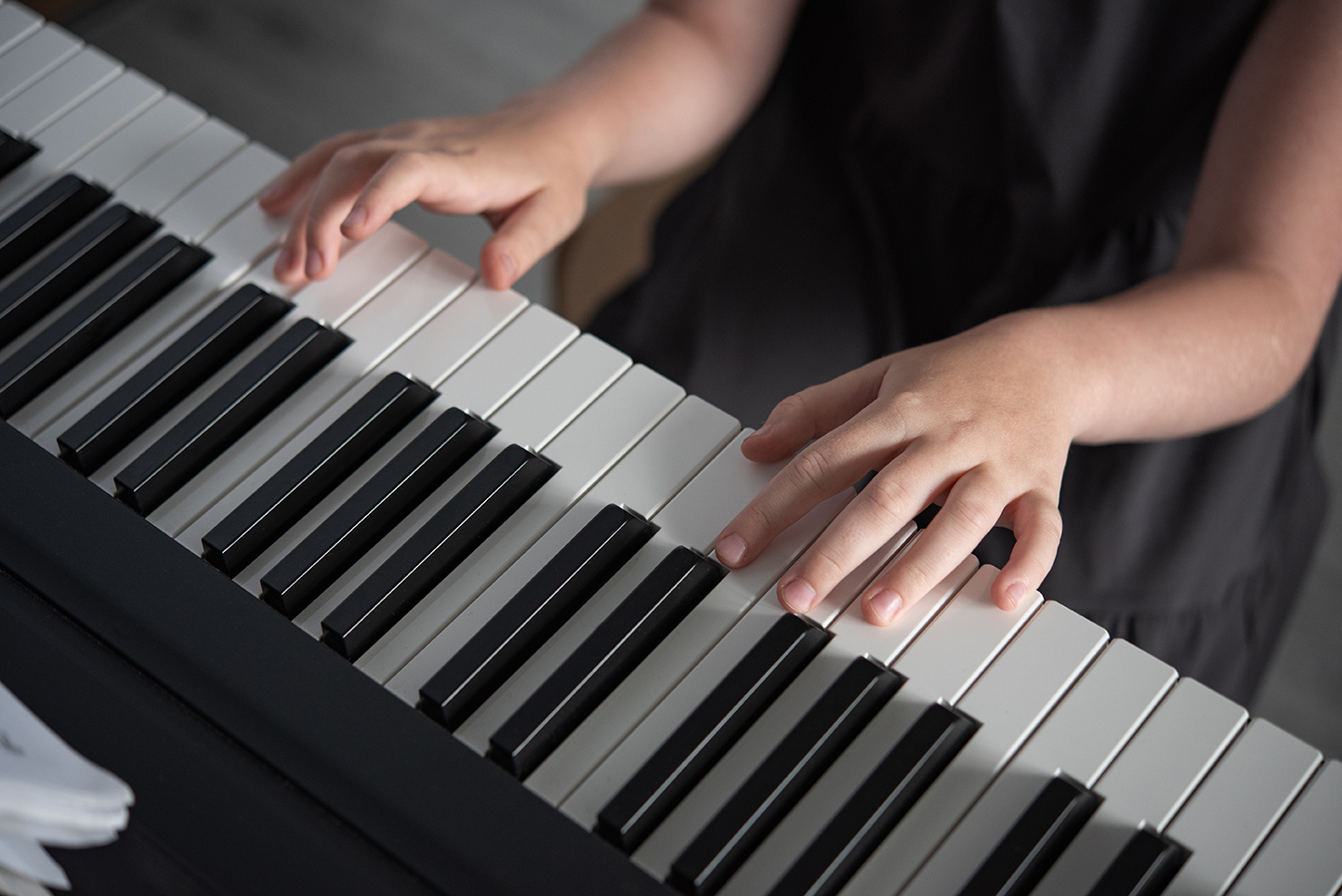Language Promotion Through Music
Latest Posts • September 28 2021
Music and speech have a lot in common. Characteristics such as pitch, tempo, intonation and timbre play an equally important role in speaking and in making music. In fact, musical and linguistic stimuli are even processed in the same regions of the brain. And on top of that, children develop the ability to sing and speak at the same time. It’s no wonder that musical language development is used so successfully. But how exactly does language promotion through music work?
For age-appropriate language development, a good early musical education can already have a positive effect on all children. We observe this every day in our Kling Klong classes. Targeted musical language development is then used more with older children who have catch-up deficits in their language development.

The difference to speech and music therapy
Therapy is used against specific speech disorders such as a sibilant disorder or stuttering. Speech disorders of this type should be treated by speech therapy in consultation with a pediatrician. Accordingly, speech therapy comes into play when a disorder is to be compensated.
Language support, on the other hand, can already be used prophylactically.
These are the areas that musical language development influences
Singing and making music as it takes place in early music education with younger children promotes, among other things, phonological awareness through playful learning of sounds, syllables and rhymes. A good sense of sounds and syllables is important later, especially when learning to read and write. In addition, singing expands and improves vocabulary. Catchy rhythms and rhymes make it easier to remember new words and internalize them more quickly.
When older children – around elementary school age – begin to learn an instrument, music training can also provide an improved sense of language.
By the way: Both hemispheres of the brain are involved in the processing of music and language. Speech as linguistic grammar and structure is predominantly processed in the left hemisphere of the brain. Speech melody and speech rhythm, on the other hand, are processed more in the right hemisphere of the brain. The speech melody is, so to speak, the “speech music”.
Music and speech are processed in the same regions of the brain. This means that rhythm exercises during drum lessons, for example, also improve the feeling for the rhythm of the speech.
What else is important
When we listen to music or speech, our brain first perceives the flow of the speech, the prosody or melody. This includes duration, pitch of the tones, intensity, dynamics and emphasis. Only then, a structured and analytical processing of what we hear takes place.
Since the prosodic elements of language are, so to speak, superordinate to or prior to the linguistic ones, musical language promotion should first concentrate on these elements. Good early musical education addresses this in passing, because it ensures that music is grasped holistically. It would be detrimental to introduce an instrument first or even to start learning notes.
Important in terms of language promotion, on the other hand, are first:
- Singing and listening to songs, tones, syllables and melodies – with pleasure with playful experiments like different accentuations
- Listening to and expressing different pitches
- Discovering different musical styles
- Experiencing music sometimes fast, sometimes slow, sometimes loud, sometimes soft
- playfully experimenting with rhythms
- perceiving harmonies and dissonances
- Making stories sound
- Painting to music
- Movement to music
Only later should the second, linguistic level be musically promoted, for example, through the learning of notes.
Last but not least, I would like to emphasize once again at this point: Every human being is musical. Just as we learn to speak as a matter of course, we can make music as a matter of course. The similarities between linguistic and musical development clearly demonstrate it.




Leave A Comment